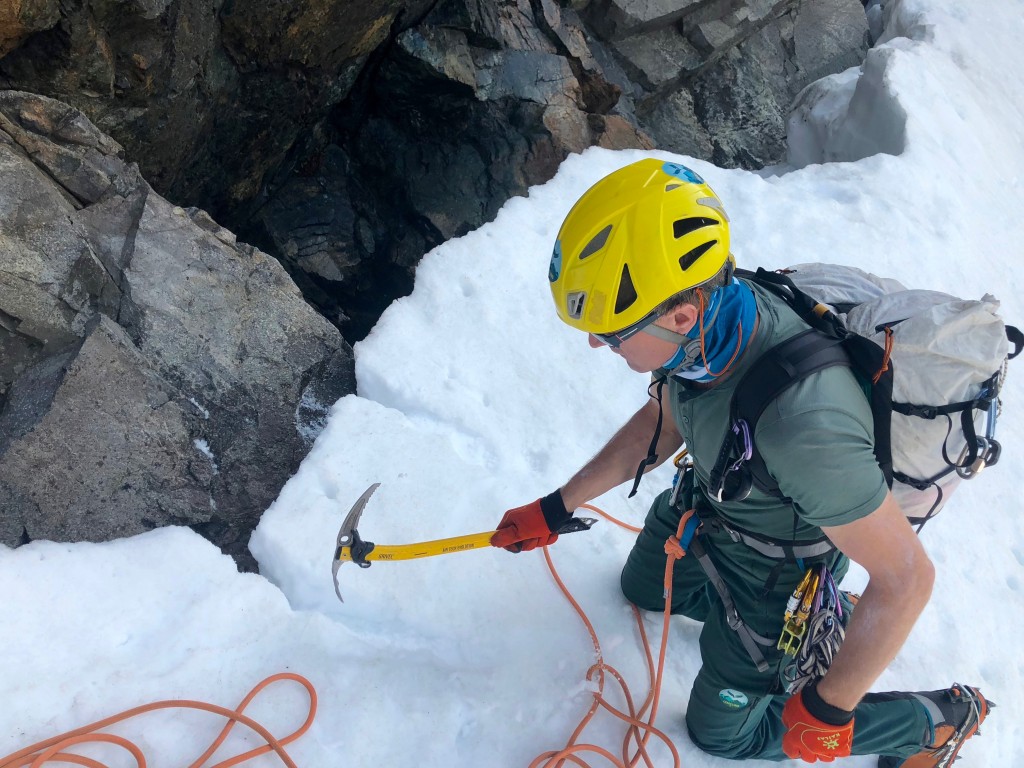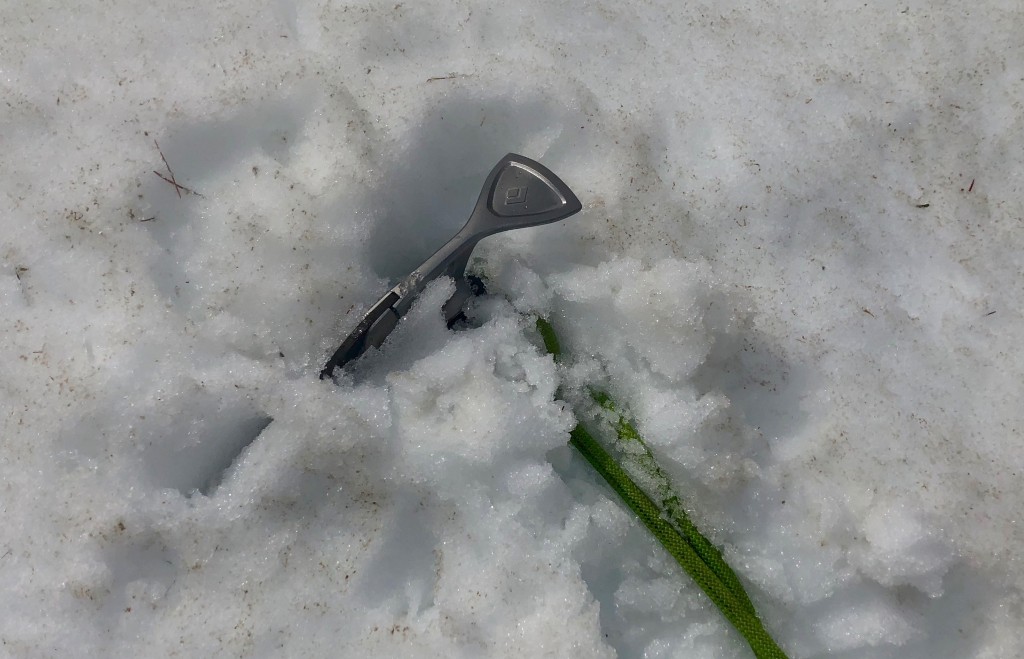A Beginner’s Guide to Choosing Your First Ice Axe
When you’re determined to conquer some heights, you’ll need to have the proper gear. You can’t just go with your runners, a track suit, and a cap. Besides the warm clothing, suitable foot wear and crampons, one of the most important pieces of equipment is the ice axe. It’s basically a “third leg” that will aid your vertical journey.
Part of the Axe

Knowing the construction of the axe can give you a much better understanding of its function and what type of axe you need in your life. Axes have several parts. The first one is the head. It’s the broadest part of the tool. It’s double-headed, meaning, one side has the pick and the other has the adze.
These are lightweight and compact ice axes that are mostly built from steel alloy. The second part is the shaft. It’s also called a handle and it’s made of steel, aluminium, fibreglass, carbon fibre or a composite. The handle can be straight or curved, the pick is the pointy end you use when climbing vertical slopes or when driving into the snowpack.
The adze is a squared-off, flattened wedge that stands on the opposite side of the pick. It’s perfect when you want to make steps in the snow, carve some shelters, dig trenches, or flatten the tent’s platform site. There are ice axe models that instead of an adze have a hammer. Choosing one is mainly a personal preference and something you choose depending on the terrain you’re visiting.
Another part of the axe is the spike. It’s at the bottom of the shaft and has a metal point. It can help you climb steadily and even act as an anchor to prevent a slip and fall. There’s also the carabiner hole which is self-explanatory. Last but not least is the leash. The leash can be helpful during the climb and prevent the axe from slipping from your hand. There’s also the danger of a loose axe twirling around you in case you fall, but the leash is always helpful.
Types of Axes
Walking
Walking a hill during the winter is a demanding task. You’ll definitely need crampons and aт least one walking axe. It’ll give you stability and security during your travels. It usually has a straight shaft that will help you navigate through slopes easily, and if you’re in a self-arrest mode you can easily manoeuvre it.
In general, they can be 70-90 cm long. The length you get depends on your height and comfort level. If it’s too long, you won’t be able to handle it properly, and if it’s too short it won’t do the job right. Keep in mind that you should always hold it with your uphill hand.
Alpine
Between icy trekking and intense technical climbing, there’s a wide range of mountaineering activities to choose from. For example, consider Scottish winter mountaineering or alpine routes. Some of these types of routes have steep ground and an alpine axe will help you a lot.
The design includes an upper and a lower shaft. The upper one is straight to make plunging easier. The second part is slightly curved to make clearance better. Alpine ice axes are usually 50-60 cm long which gives you a very comfortable swing during the climbing. This is an axe that comes in both adze and hammer versions.
Technical
Modern technical axes are created to make your winter climbing much easier. They’re fully curved and have steep pick angles. Plus, they’re equipped with protective lower hand rests. The shaft is curved to make the clearing of obstacles easier and faster. It’s also crucial for the stable placement of the axe in the ice.
When climbing, it’s nice to have two technical axes. One with an adze and one with a hammer. The adze will help you remove rime or other potential dangers, and the hammer will slam pegs in the ice as stable as possible. A combination of these two technical axes will prepare you for anything.
Offset
These axes have a so-called offset handle. It’s made with a more ergonomic design in mind. It’s made to be more comfortable for your wrist and a bit more stable in your hand, especially when it comes to more delicate work. Offset ice climbing axes should always be used as a pair. Usually there’s no adze, but just a hammer set up.
What to Consider When Buying?

Size
Ice axes are not a one-size-fits-all situation. They come in many lengths so you should find the most suitable for your adventures. Their length will vary between 50-70 cm but there are always slightly bigger and smaller exes. There’s one rule or standard when you choose an axe. It says that the base spike should hover at least 2 cm above your ankle. Of course, if you have any questions or inquiries, always consult with the seller. They’ll help you pick the right one.
Curvature
How curvy the axe is will depend on what terrain you’re conquering. Straight handles are great for flatter terrain where they only give you support. Slightly curved shafts use that end to prevent your hand from hitting the snow. Curved shafts have a high strength rating and they’re perfect for steep climbs.
Materials
These axes are made of steel alloy that is lightweight, strong, and durable. All of these characteristics are necessary if you want to have a long-lasting axe in your hand. The shaft is usually made of aluminium to give you the proper balance between weight and endurance. There are also titanium axes but they’re hard to find and a bit more expensive than the rest.
Leash or no Leash
Most people use leashes with axes even though they are not necessary. But the last thing you want is to lose your brand-new axe down that 500-meter slope you just climbed. Some leashes come with the axe and some you need to buy separately. You can also use a 5-7 mm accessory cord as a leash, or even a 2.5 cm webbing.



